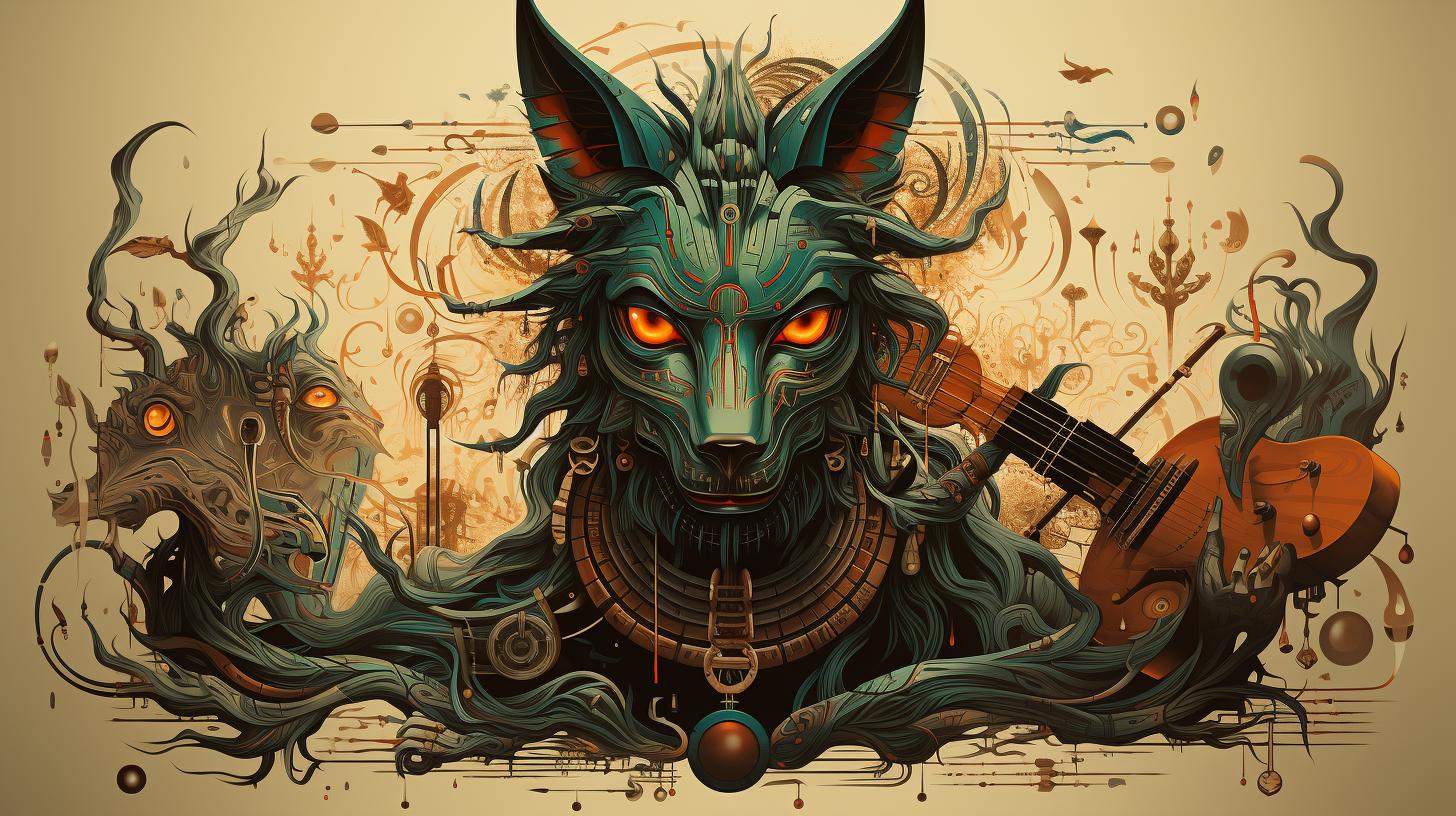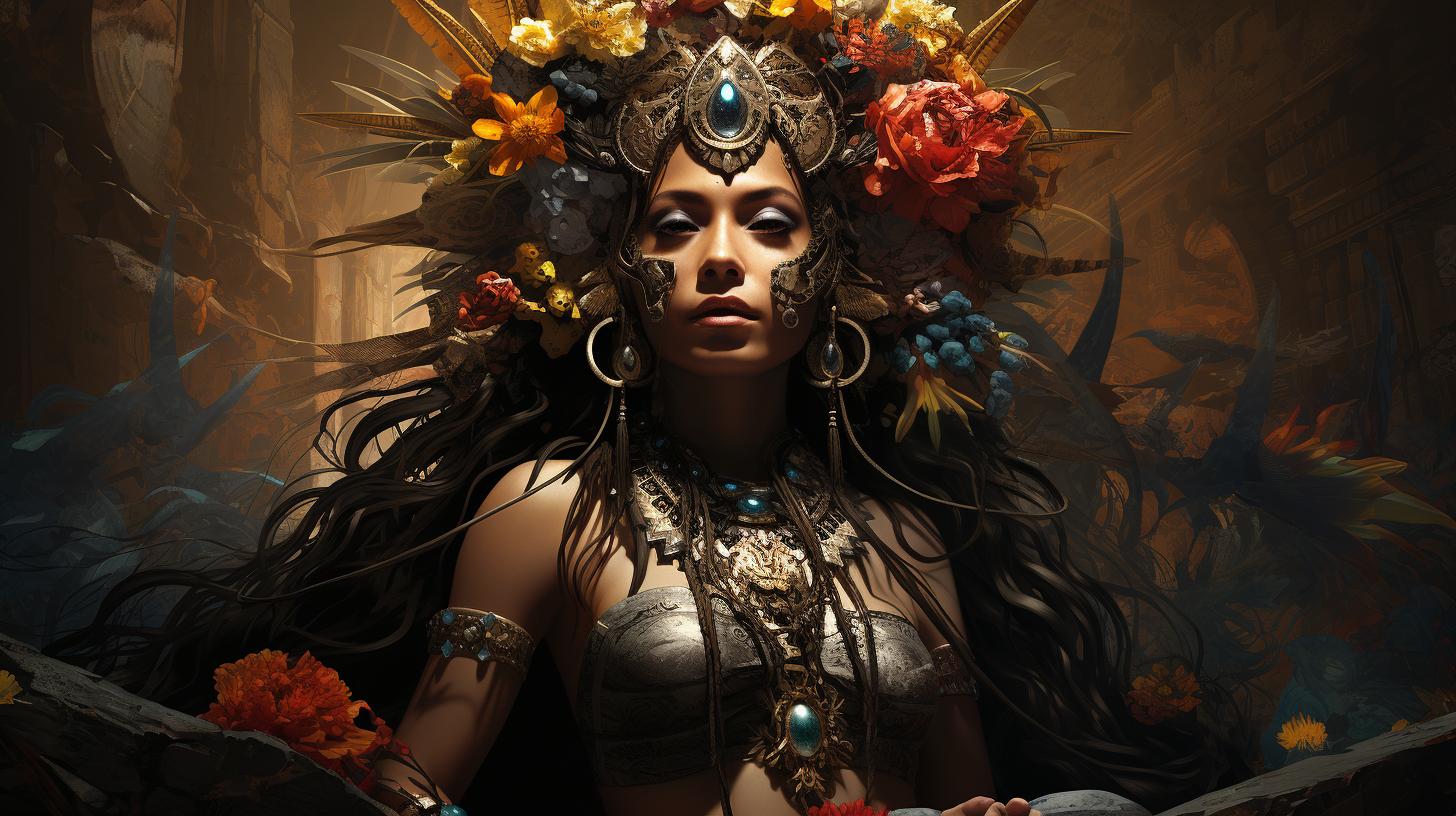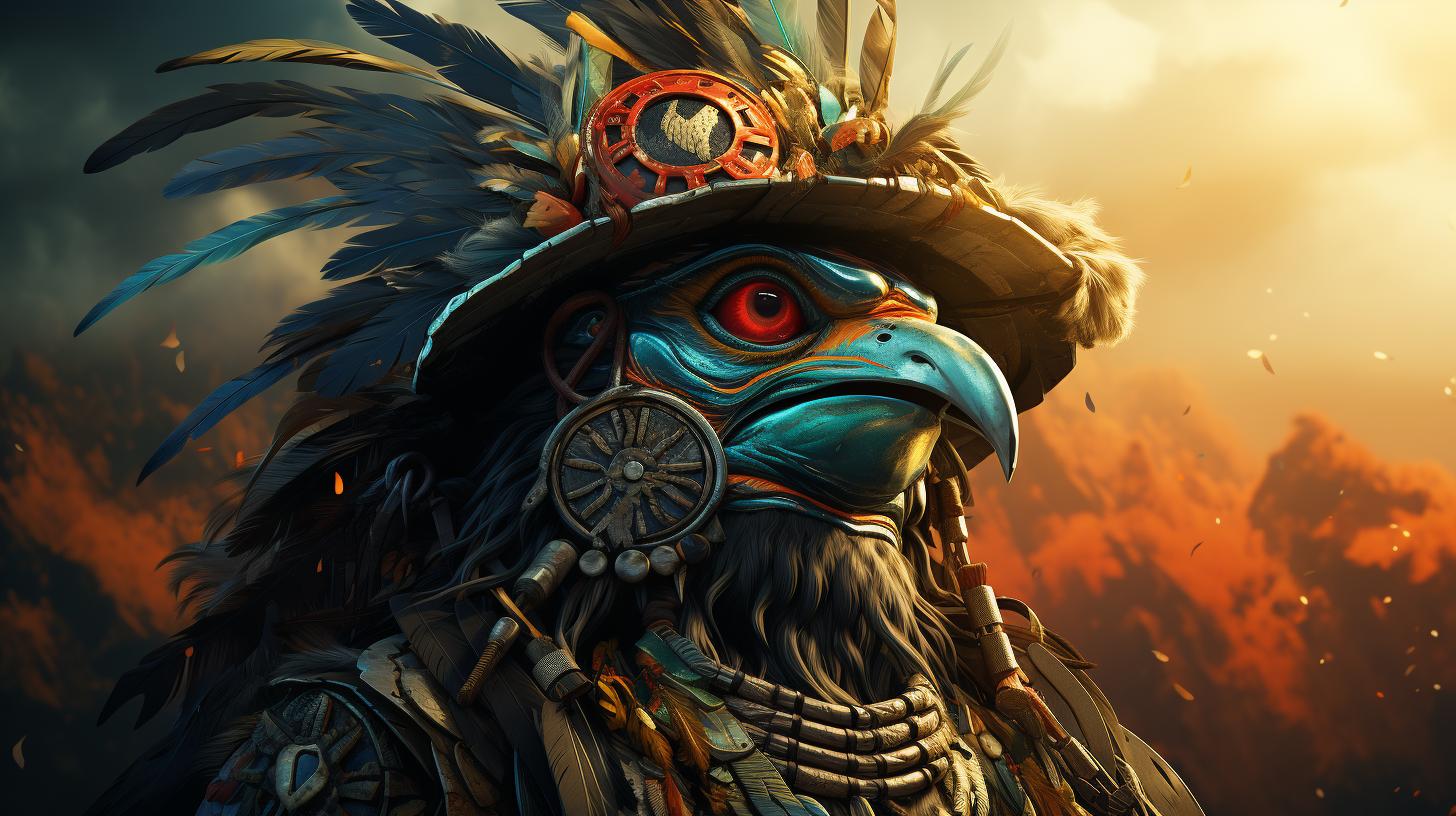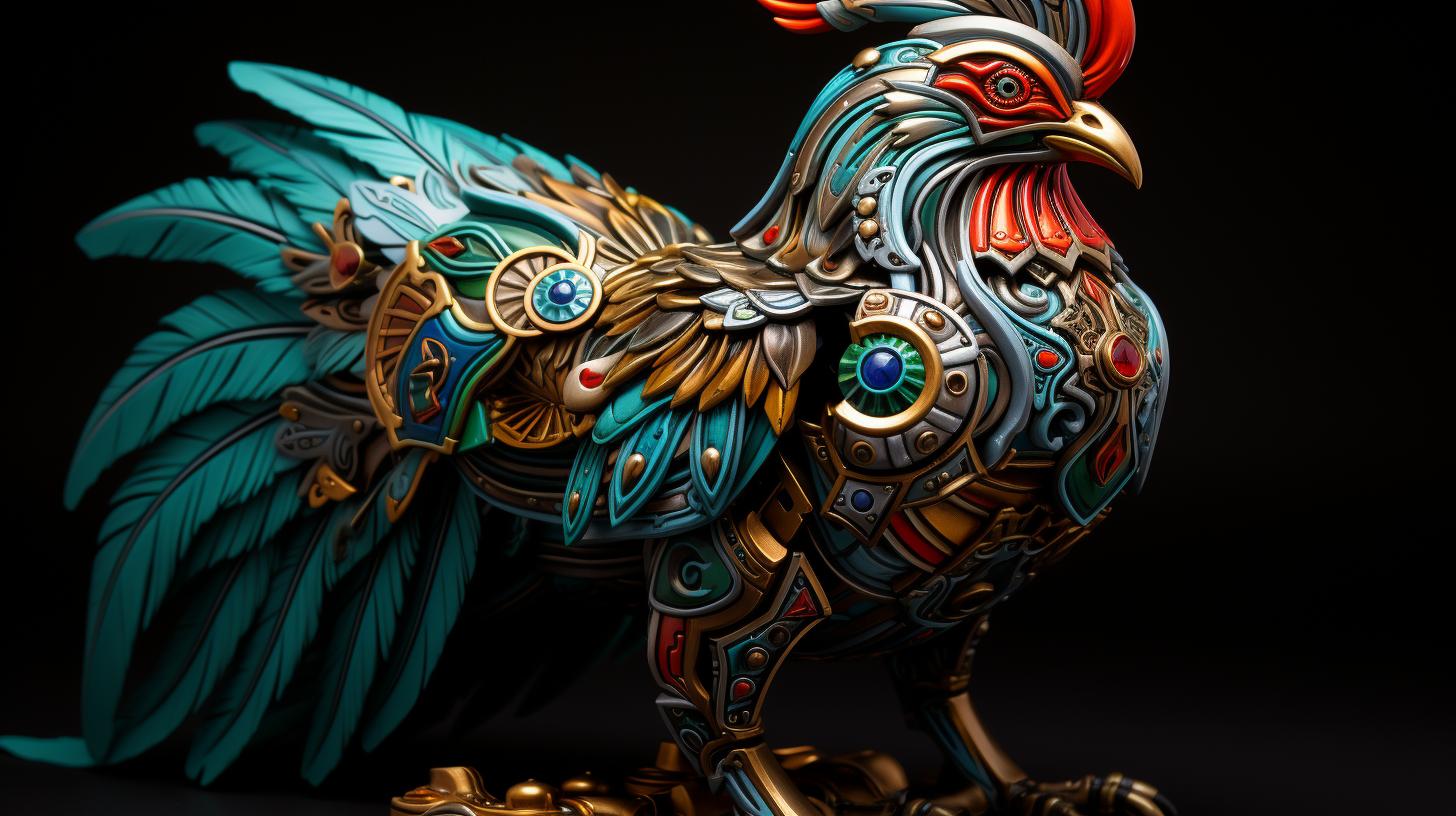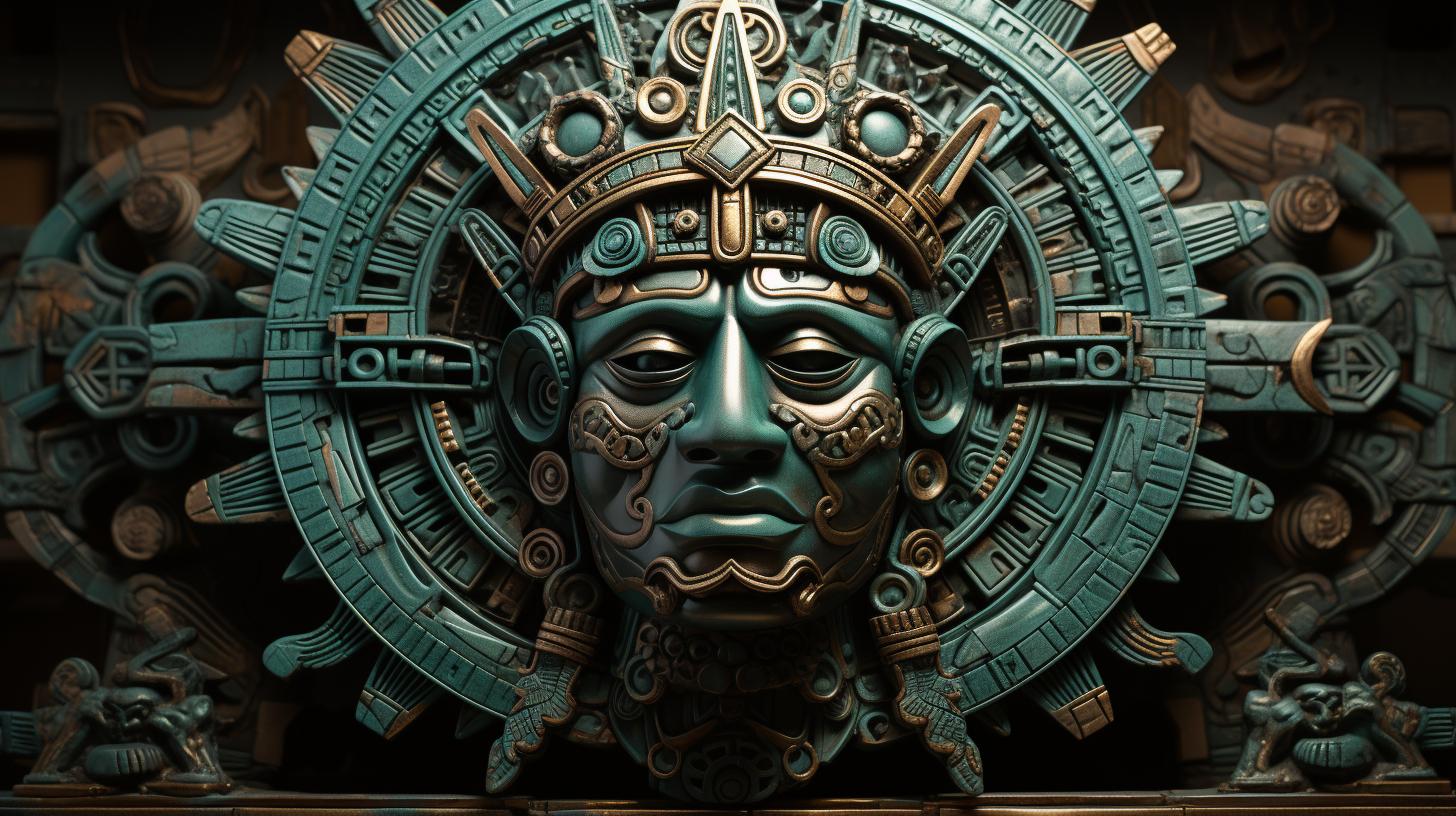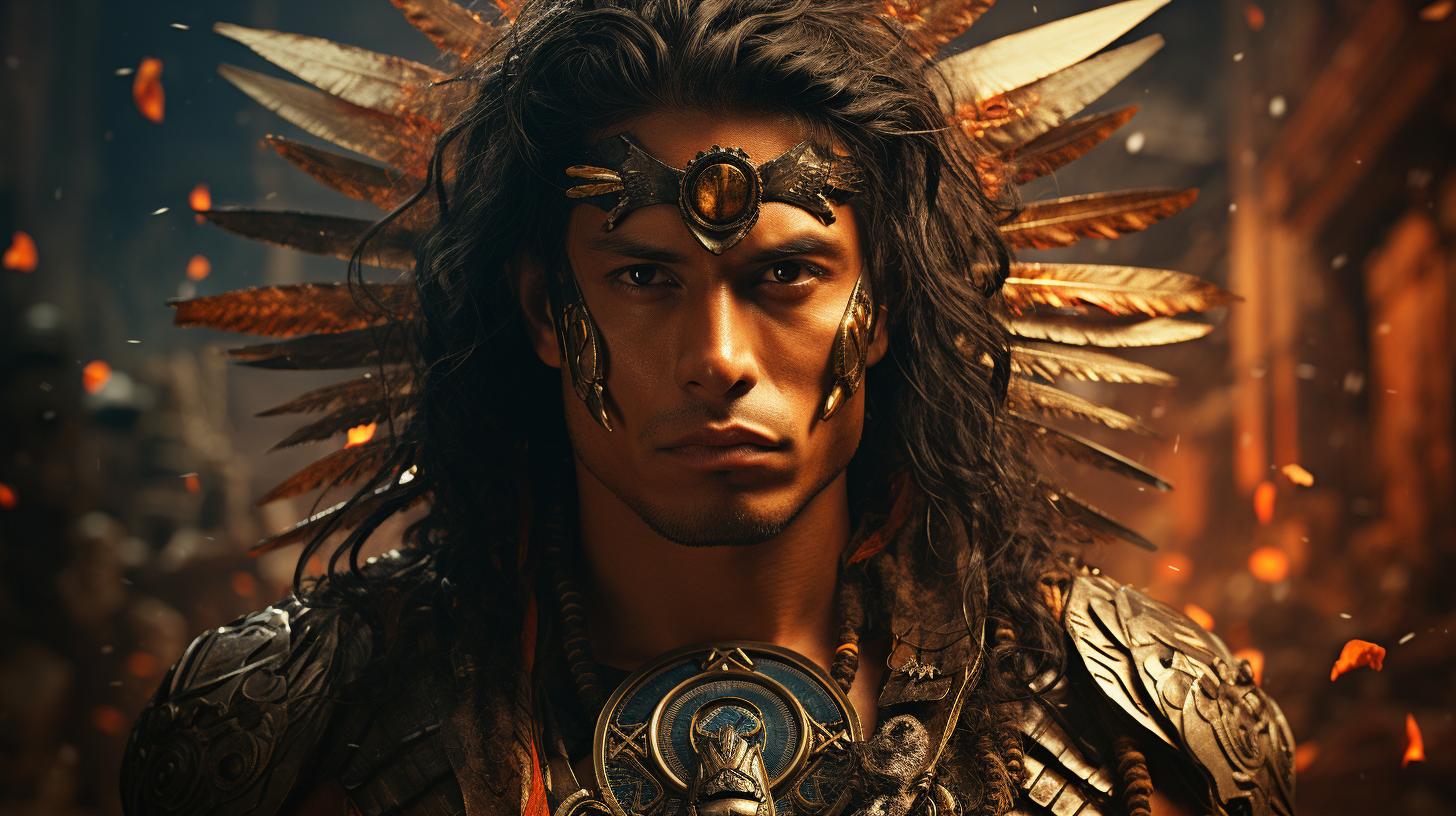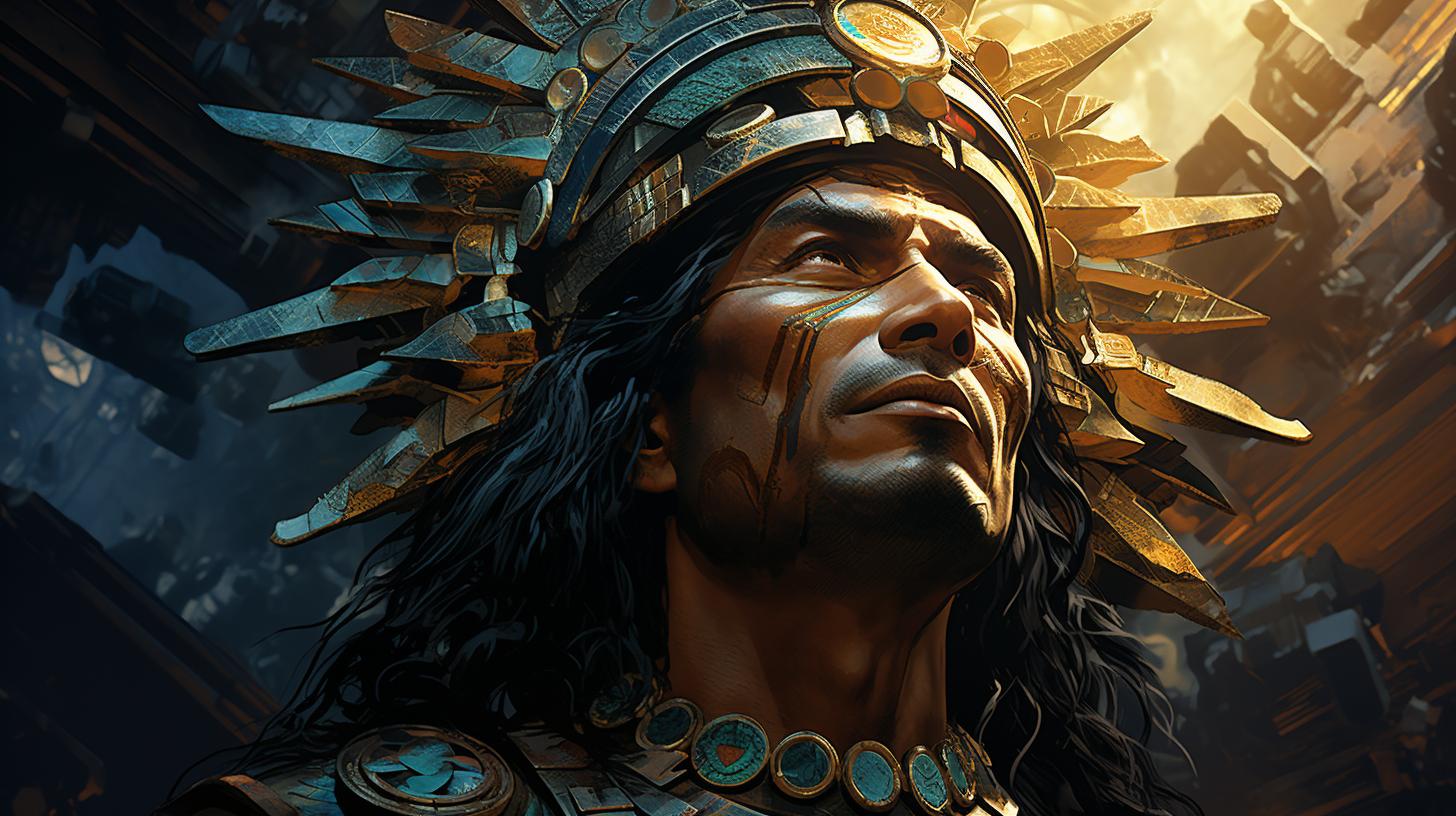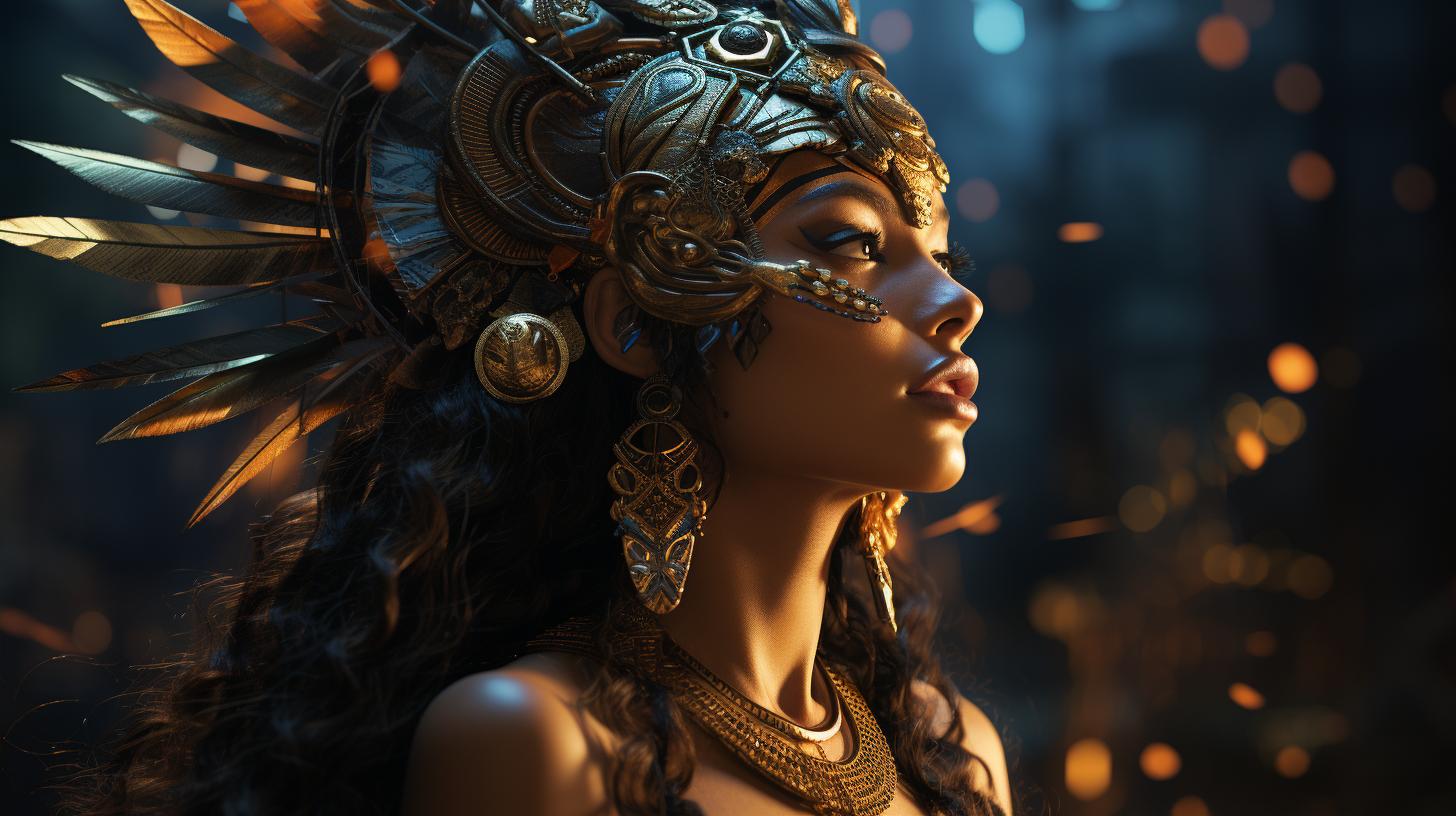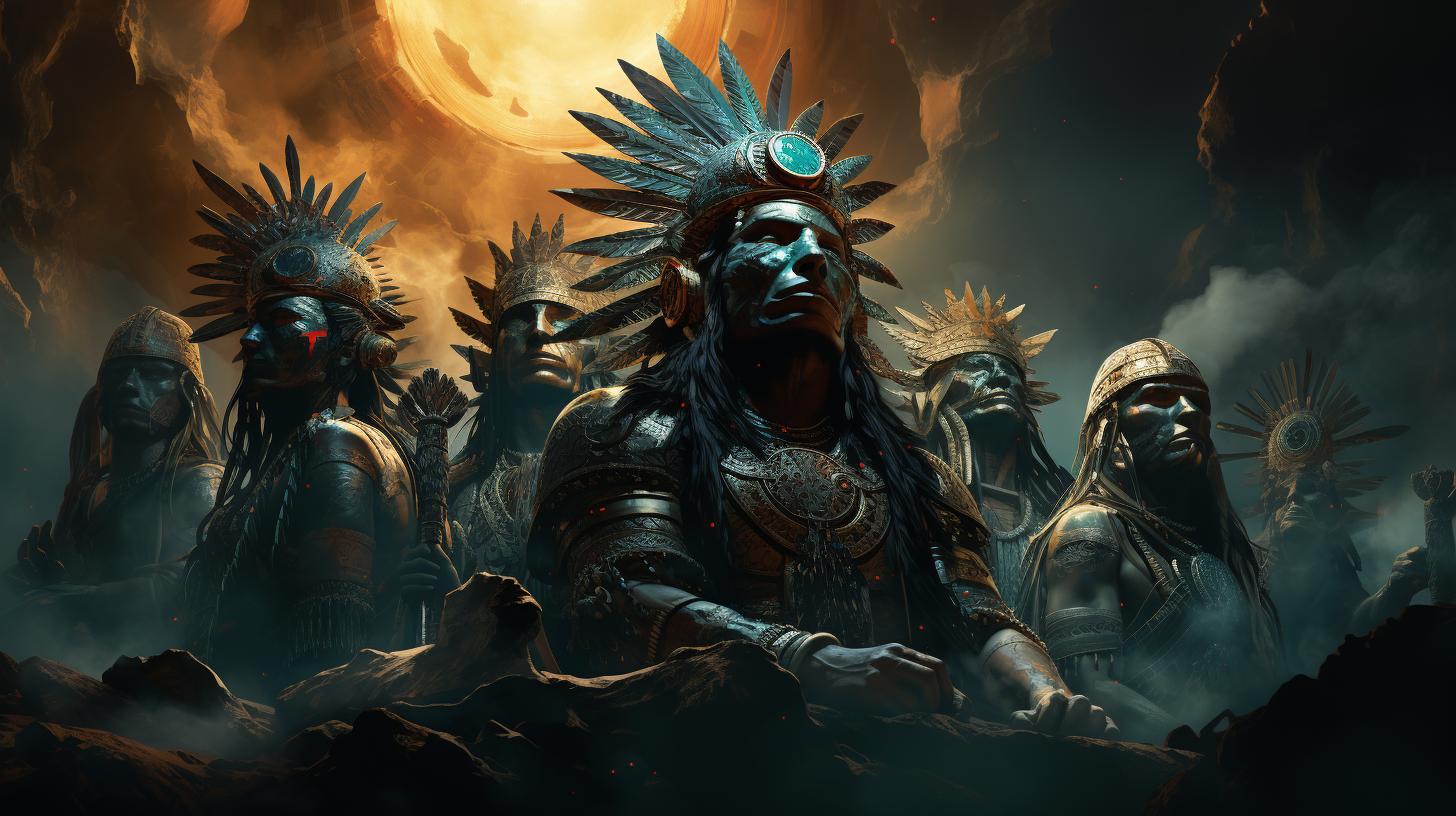Huehuecoyotl: The Mischievous Aztec God of Mythology, Music, and Joy
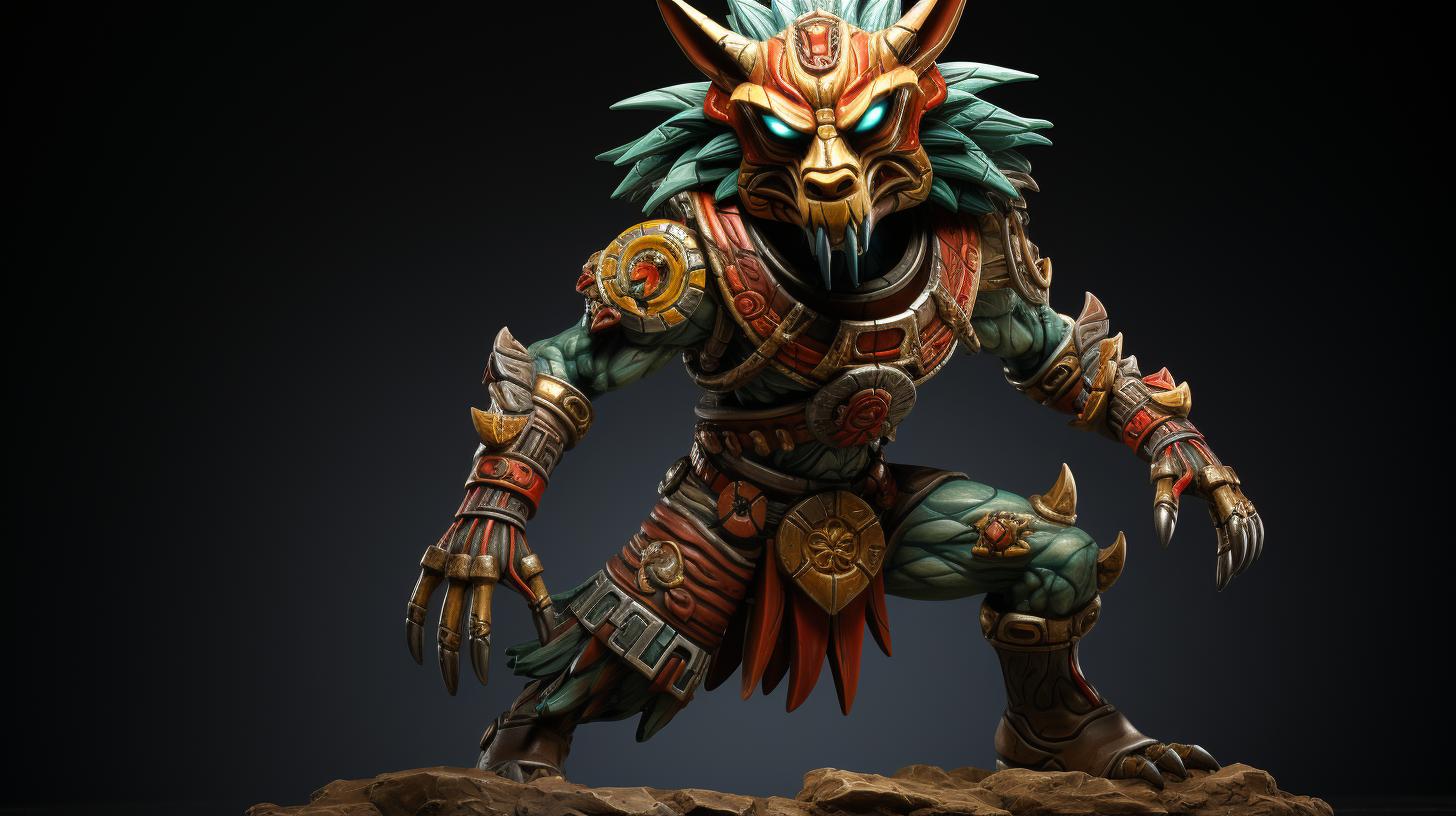
Huehuecoyotl, known as the Old Coyote and the Ancient Drum, is a mischievous and deceptive god in Aztec mythology. He is associated with storytelling, music, dance, and joy.
Huehuecoyotl shares his shape-shifting powers with the Tezcatlipoca family of gods. He is often portrayed as a coyote dancer accompanied by a human drummer. Huehuecoyotl is also revered as the patron of uninhibited sexuality, embracing both male and female partners of any species.
Stay tuned to explore the origins, powers, cultural significance, and modern perspectives of Huehuecoyotl, the influential Aztec deity.
The Origins and Mythology of Huehuecoyotl
Huehuecoyotl, a prominent figure in Aztec mythology, holds a significant place in the Aztec pantheon. This coyote god is known as a trickster, embodying cunning and mischief in Aztec lore.
His association with Tezcatlipoca, one of the most revered gods, further enhances his importance within the myths and legends of the Aztecs.
The Aztec Pantheon and Huehuecoyotl
Within the vast Aztec pantheon, Huehuecoyotl holds a distinctive role. Although often associated with Tezcatlipoca due to their shared ability to transform, Huehuecoyotl stands out as an independent deity known for his mischief and playful nature.
His unique character and stories play a significant role in Aztec mythology, captivating the Aztec people with his tricks and antics.
The Trickster Coyote in Aztec Mythology
Huehuecoyotl’s portrayal as a trickster coyote in Aztec mythology is deeply rooted in their cultural beliefs. Similar to other trickster figures in various mythologies, he thrives on causing mischief and testing the boundaries of societal norms.
He often finds himself tangled in pranks that affect both gods and humans, leading to unintended consequences and humorous situations.
Huehuecoyotl’s Association with Tezcatlipoca
Huehuecoyotl’s close association with Tezcatlipoca, a significant deity in Aztec religion, further enhances his importance within the Aztec mythological framework. Both gods possess the power to change their forms, which allows them to traverse different realms and manipulate situations.
Their parallel abilities and overlapping characteristics create compelling narratives and intricate connections within Aztec mythology.
The Powers and Attributes of Huehuecoyotl
Huehuecoyotl, the Aztec god, possesses a multitude of powers and attributes that make him a significant figure in Aztec mythology. This section explores three key aspects of Huehuecoyotl’s character and abilities: his role as the god of narration, music, dance, and joy; his shape-shifting abilities and mischievous nature; and his status as the patron of uninhibited sexuality.
The God of Narration, Music, Dance, and Joy
Huehuecoyotl is revered as the god of narration, music, dance, and joy. He embodies the essence of storytelling and is believed to inspire creativity and artistic expression. As the god of music, he is often depicted playing the drums or other musical instruments, bringing rhythm and harmony to the world.
His association with dance highlights his ability to bring merriment and celebration, spreading joy among the people.
Shape-shifting Abilities and Prankster Nature
One of Huehuecoyotl’s notable attributes is his shape-shifting abilities. Like the Tezcatlipoca gods, Huehuecoyotl can change form, embodying the essence of transformation and adaptation. However, his shape-shifting prowess is often mischievous in nature.
He is known to play pranks on other deities, sometimes causing unintended consequences for himself and those around him. This trickster aspect of Huehuecoyotl adds an element of unpredictability to his character, showcasing his complex and multifaceted nature.
Huehuecoyotl as the Patron of Uninhibited Sexuality
Huehuecoyotl holds the esteemed position of being the patron of uninhibited sexuality. He defies conventional norms by embracing partners of any gender and species, symbolizing the fluidity and freedom of human sexual expression.
He is associated with both male and female lovers, emphasizing his role as a deity who transcends traditional boundaries. This aspect of Huehuecoyotl’s character represents his role in fostering inclusivity, acceptance, and celebration of diverse sexualities.
By embodying the powers of narration, music, dance, and joy, possessing shape-shifting abilities, and representing the patron of uninhibited sexuality, Huehuecoyotl emerges as a fascinating and unique deity in Aztec mythology.
His multifaceted nature and influential attributes continue to captivate and inspire individuals to embrace their creativity, celebrate life, and embrace the diverse expressions of sexuality.
Huehuecoyotl in Aztec Culture and Beliefs
In Aztec society, Huehuecoyotl held a significant role in religious practices and was revered during various festivals and ceremonies.
His representations and iconography solidified his importance within the culture.
Huehuecoyotl’s Role in Aztec Religious Practices
Huehuecoyotl was considered a divine being and was actively worshipped by the Aztecs. He was believed to possess transformative powers and was considered a bridge between the physical and spiritual realms.
Aztec rituals often incorporated his presence, seeking his blessings and guidance.
Festivals and Ceremonies Honoring Huehuecoyotl
Specific festivals were dedicated to celebrating Huehuecoyotl and his attributes. These festivities involved music, dance, storytelling, and merriment, emphasizing his role as the god of narration, music, dance, and joy. Participants would often dress in coyote-themed attire, imitating the mischievous nature of this deity.
Representations and Iconography of Huehuecoyotl
Depictions of Huehuecoyotl can be found in Aztec art and codices. He is commonly portrayed as a coyote dancer with human hands and feet, often accompanied by a human drummer. These artistic representations convey his role as a performer and entertainer.
Additionally, symbolism associated with sexuality and transformation can be observed in his iconography.
Showcasing Huehuecoyotl in Art and Literature
Discover the rich artistic and literary representations of Huehuecoyotl, the mischievous Aztec god. From ancient codices and paintings to captivating poems and stories, this section explores how Huehuecoyotl has been showcased throughout Aztec art and literature.
Depictions of Huehuecoyotl in Codices and Paintings
Aztec codices and paintings provide a window into the visual portrayal of Huehuecoyotl. These vibrant and intricate artworks feature the coyote god engaged in various activities, often accompanied by a human drummer.
These depictions capture the essence of his trickster nature and his connection to music, dance, and joy.
Huehuecoyotl’s imagery in codices and paintings showcases the blending of human and animal attributes.
As a coyote with human hands and feet, he holds a tambourine-like instrument or engages in lively dance movements. These illustrations symbolize the creative expression and energy associated with the god, offering a glimpse into his playful and mischievous essence.
Huehuecoyotl’s Influence on Aztec Poetry and Stories
Huehuecoyotl’s influence extends beyond visual art and into the realm of poetry and storytelling. Aztec poets and storytellers have woven his mystical persona into their works, capturing the essence of his cunning and trickery.
In Aztec poetry, Huehuecoyotl often appears as a shapeshifting figure, traversing realms and creating chaos with his pranks. Poems reflect his unpredictable nature and his ability to blur boundaries between reality and mythology.
Through vivid descriptions and imaginative metaphors, poets bring Huehuecoyotl to life, showcasing his impact on Aztec literary traditions.
Furthermore, Aztec stories and legends feature compelling narratives surrounding Huehuecoyotl. These tales emphasize his role as a disruptor, challenging societal norms and provoking laughter.
Stories depict him tricking other deities, ordinary humans, or even engaging in playful rivalry with other trickster figures from various mythologies.
The influence of Huehuecoyotl in Aztec poetry and stories extends beyond mere entertainment.
It serves as a reminder of the balance between chaos and order, humor and seriousness, and the ever-present presence of mischief in human existence.
In conclusion, the artistic and literary representations of Huehuecoyotl in Aztec codices, paintings, poetry, and stories provide profound insights into the mischievous god’s character, legends, and role in Aztec culture.
Huehuecoyotl’s Impact on Society and Human Connections
Huehuecoyotl, the mischievous Aztec god, had a profound impact on society and human connections in Aztec culture. Through his various attributes and associations, he influenced gender and sexuality as well as held cultural significance through his pranks.
Huehuecoyotl’s Influence on Gender and Sexuality
Huehuecoyotl’s role as the patron of uninhibited sexuality extended beyond traditional gender norms. He challenged societal expectations by embracing partners of any gender and species, promoting a more inclusive understanding of relationships and desires.
This acceptance of diverse sexualities and gender identities had a lasting impact on Aztec society. It fostered an environment that allowed individuals to explore and express their true selves, free from judgment or prejudice.
The Cultural Significance of Huehuecoyotl’s Pranks
Huehuecoyotl’s mischievous nature and propensity for pranks held cultural significance in Aztec society. His tricks served as a reminder of the importance of laughter, joy, and spontaneity in life.
These pranks also carried deeper meanings, often challenging societal norms, exposing hypocrisy, or highlighting the absurdities of the human experience.
Through his tricks, Huehuecoyotl played a crucial role in questioning the status quo and encouraging critical thinking.
Furthermore, his pranks created opportunities for social bonding and community-building. They brought people together, fostering a sense of camaraderie as they laughed and shared in the amusement.
Huehuecoyotl’s pranks were a way to break down barriers and connect people through shared experiences.
- Huehuecoyotl’s influence on gender and sexuality challenged societal norms, promoting inclusivity and acceptance.
- Huehuecoyotl’s pranks held cultural significance, questioning norms and bringing people together through shared amusement.
Through his influence on gender and sexuality as well as his cultural significance through pranks, Huehuecoyotl left a lasting impact on society and human connections in the Aztec civilization.
Understanding the Role of Huehuecoyotl in the Aztec Calendar
Revealing the profound significance of Huehuecoyotl in the Aztec culture, the understanding of this deity’s role in the Aztec calendar is vital. The Aztecs had a complex calendar system that consisted of two interrelated cycles: the Tonalpohualli (sacred calendar) and the Xiuhpohualli (solar calendar).
Huehuecoyotl’s Position in the Tonalpohualli
Within the Tonalpohualli, Huehuecoyotl holds a prominent place as the ruler of the fourth day, known as Cuetzpalin. This day is associated with the energy and essence of the lizard, symbolizing adaptability and transformation.
As the ruler of this day, Huehuecoyotl influences the characteristics and events that occur during this period.
Interpretations of Huehuecoyotl’s Day and Trecena
Interpreting the significance of Huehuecoyotl’s day within the Tonalpohualli involves examining the traits associated with the coyote god. His mischievous and trickster nature is believed to influence people’s behavior, encouraging them to embrace change, adaptability, and the enjoyment of life’s pleasures.
Furthermore, the fourth trecena, 1-Xochitl, is also under the influence of Huehuecoyotl. This trecena, associated with flowers, beauty, and fertility, reflects the vibrant and joyous nature often synonymous with this Aztec god.
It is during this trecena that the energy of storytelling, music, dance, and sexual liberation intensifies, aligning with Huehuecoyotl’s domains.
In summary, understanding Huehuecoyotl’s role in the Aztec calendar sheds light on the deity’s influence over specific days and trecenas, fostering adaptability, joy, and creative expression within the Aztec culture.
Contemporary Perspectives on Huehuecoyotl
Huehuecoyotl’s Relevance in Modern Mexican Culture: In present-day Mexico, Huehuecoyotl continues to hold cultural significance as a symbol of creativity, mischief, and embracing the joyous aspects of life.
He is often invoked in artistic endeavors, particularly in music, dance, and storytelling. Many Mexican artists and performers draw inspiration from Huehuecoyotl’s trickster nature and incorporate his energy into their work, keeping the spirit of this Aztec god alive in contemporary cultural expressions.
Cultural Appropriation and Misinterpretation of Huehuecoyotl: However, it is crucial to address the issue of cultural appropriation and misinterpretation surrounding Huehuecoyotl. As the popularity of Aztec mythology and indigenous cultures increases, there is a risk of misrepresentation and commodification of sacred traditions.
It is essential for individuals and communities to approach the worship and understanding of Huehuecoyotl with respect, acknowledging and honoring the cultural context from which he originates. Cultural sensitivity and education are key in preventing the dilution and distortion of Huehuecoyotl’s essence.
Exploring Related Gods and Myths in Aztec Mythology
As we delve into Aztec mythology, it becomes evident that Huehuecoyotl is not an isolated deity but rather part of a complex pantheon with interconnected myths and gods. Let’s explore the connections between Huehuecoyotl and other Aztec deities, as well as the similarities with other mythological canines and shapeshifting gods.
Connections between Huehuecoyotl and Other Aztec Deities
Within the Aztec pantheon, Huehuecoyotl shares a close association with the Tezcatlipoca family of gods. Tezcatlipoca is a powerful deity associated with many aspects such as destiny, sorcery, and conflict.
Huehuecoyotl’s connection to Tezcatlipoca suggests a synergy between their powers of transformation and mischief.
Another important connection is seen with Xochiquetzal, the goddess of love, beauty, and sexuality. Huehuecoyotl’s uninhibited sexuality aligns with the realm of Xochiquetzal, making them potential counterparts or complementary forces within the Aztec belief system.
Similar Mythological Canines and Shapeshifting Gods
While Huehuecoyotl is often depicted as a coyote, he shares similarities with other mythological canines found in various cultures. In Mesoamerican mythology, we find the Nahual, which refers to individuals who could transform into animals, often with the help of supernatural powers.
This concept of transformation and connection to animals can be seen in Huehuecoyotl’s portrayal as well.
Furthermore, the notion of shapeshifting gods is prevalent in many mythologies worldwide. In Norse mythology, Loki possesses similar trickster qualities and shape-shifting abilities, challenging the boundaries of form and reality, much like Huehuecoyotl.
This parallel suggests a universal fascination with these complex deities who navigate between different identities and worlds.
- Huehuecoyotl exhibits connections with Tezcatlipoca and Xochiquetzal within the Aztec pantheon.
- Huehuecoyotl’s portrayal as a coyote resonates with the concept of Nahual, individuals transforming into animals.
- Similarities can be drawn between Huehuecoyotl’s shape-shifting nature and the Norse god Loki in other mythological traditions.
By exploring these connections and similarities, we gain a deeper understanding of Huehuecoyotl’s place within Aztec mythology and the broader cultural contexts that shape our interpretation of this mischievous deity.
Final Thoughts on Huehuecoyotl Aztec God
Reflecting on the rich mythology and cultural significance of Huehuecoyotl, it becomes clear that this Aztec god holds a special place in the pantheon. In the context of Aztec beliefs and practices, Huehuecoyotl embodies the essence of trickery, creativity, and joy, intertwining these qualities with the realms of narration, music, and dance.
Huehuecoyotl’s association with Tezcatlipoca further highlights his dualistic nature, capable of bringing both mischief and benevolence. The representations of this god, often depicted as a coyote dancer accompanied by a human drummer, symbolize the harmonious connection between the human world and the divine.
Furthermore, Huehuecoyotl’s role as the patron of uninhibited sexuality challenges societal norms and provides a unique perspective on gender and sexual fluidity. Celebrating his diverse range of lovers, both female and male, of various species, Huehuecoyotl represents a deity who defies traditional boundaries and embraces the full spectrum of human and divine connections.
In Aztec culture, festivals and ceremonies in honor of Huehuecoyotl are a testament to the profound impact of this god on the collective consciousness. Through artistic expressions like codices and paintings, as well as the influence on poetry and stories, Huehuecoyotl’s presence permeated every aspect of Aztec society.
Looking at contemporary perspectives on Huehuecoyotl, his relevance remains strong in modern Mexican culture. However, it is important to approach the interpretation of this deity with respect and cultural sensitivity, avoiding misappropriation or misinterpretation.
As we explore related gods and myths in Aztec mythology, the connections between Huehuecoyotl and other deities become apparent. Parallel mythological canines and shapeshifting gods further exemplify the rich tapestry of Aztec beliefs and the interconnectedness of divine beings.
Finally, Huehuecoyotl’s prominent position in the Aztec calendar, serving as the ruler of the fourth day (Cuetzpalin) and the fourth trecena (1-Xochitl), underscores his significance as a central figure in the daily and cosmic cycles.
In conclusion, Huehuecoyotl Aztec god continues to captivate our imagination with his mischievous nature, association with storytelling and music, and his embodiment of joy. Exploring his mythology and cultural impact offers us a glimpse into the complexity and richness of Aztec belief systems, reminding us of the profound connections between humans and the divine.
.

